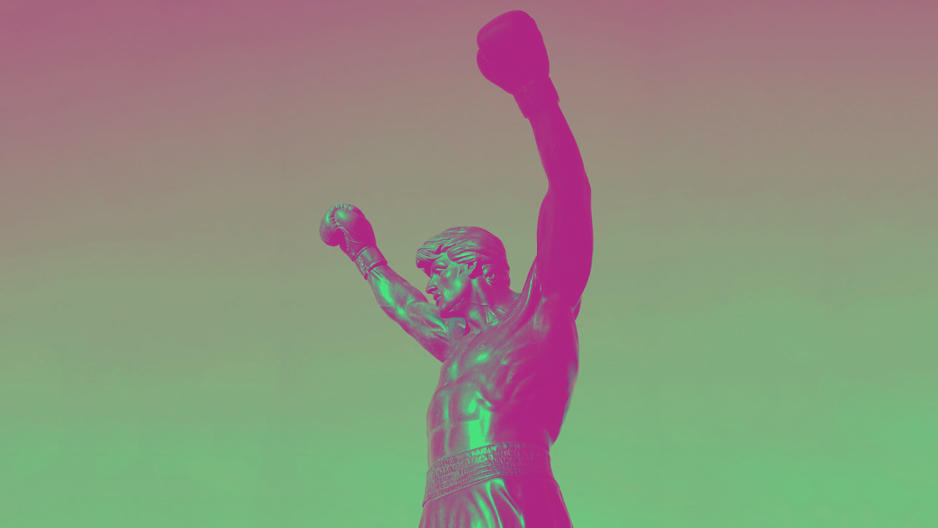The Right (And Wrong) Way To Harness Your Company’s Underdog Status
Everyone loves an underdog—the person or group that’s expected to lose but somehow manages to pull through. For startups and small companies taking on big competitors, underdog status can be an asset. It can help you craft a “come-from-behind” narrative that strikes a chord with customers, and it can even ignite a sense of purpose and drive in your team members. But if you aren’t careful, underdog status—or even just the perception of it—can do you in. Here’s how to stay on the right side of that line.
Putting The Underdog Mind-Set To Work
As an underdog, you’re constantly forced to find ways to be different from your competitors—fast. And that necessity can be a powerful resource. “We believe that an underdog mentality is essential for motivating our employees and shareholders,” says Jacob Laukaitis, cofounder of the online coupons site Chameleon John. “There’s something to be said about walking into work every day thinking that you have something to prove. It makes you hungry, creative, and filled with a sense of urgency.”
That puts pressure on small companies to continuously rethink their products and services, internal processes, and business strategies, and to anticipate what customers expect from brands in the future. And it may pay off better for them, too: Even if this same level of innovation takes place inside some bigger companies, it’s their smaller, “underdog” competitors that often have more agility to act on it.
That advantage may extend to branding as well. Market research has shown that consumers may be more likely to identify with the brands perceived as underdogs. Harvard Business School professor Anat Keinan has observed that effective underdog narratives inspire and give hope to customers. In a 2010 study she coauthored for the Journal of Consumer Research, Keinan found that brands that persevere in the face of relatively disadvantaged market positions tend to hold an outsized appeal.
She and her team began to explore this phenomenon after noticing that nearly all the candidates in the 2008 presidential election positioned themselves as underdogs, despite previous psychological research suggesting that people prefer to associate themselves with winners. But that doesn’t prevent them from rooting for underdogs, too. “Consumers identify with the disadvantaged position of the underdog,” Keinan tells the Harvard Business Review, “and share their passion and determination to succeed when the odds are against them.”
This makes intuitive sense, doesn’t it? Think for a minute about whom you relate to, both as a friend and a consumer. Your friends’ circle is made up of people you feel a connection to, whether through similar interests or because of shared experiences. You formed those friendships because you could relate to that individual. As a consumer you identify with brands that share the same passions and values as you do. Oren Berdichevsky, the co-CEO of ad-tech platform Sekindo, explains that attitude this way:
Consumers relate to companies that are humble, especially those that started off small and grew with time, including those acquired or bought by a big name. We started off in a living room, were eventually bought by Universal McCann, and now we have 65 employees and growing. When customers see that we’re like a family, they connect much more and we gain their loyalty.
So it’s no surprise this underdog marketing tactic can be particularly effective in times of economic depression, when struggling through adversity is an especially powerful narrative. Following the 2008 economic downturn, New Balance released a series of videos as part of a “Made in America” campaign, highlighting the shoe brand’s domestic manufacturing, and how one-quarter of its footwear production is based in the U.S.
The campaign showcased the company’s roots in Maine and featured ordinary employees in a bid to resonate with American consumers worried about the future and in need of some optimism. Today, New Balance continues to compete directly with global brands like Nike and Adidas, bringing in global sales of $2.73 billion in 2015.
Don’t Let Your Underdog Status Come Back To Bite You
But not all underdogs are created equal, and just like any marketing campaign, you need to manage your underdog narrative carefully. Brands that begin in a disadvantaged position can just as easily be seen by consumers as incompetent, so it’s important for startups and scrappy newcomers to frame themselves as worthy challengers from the get-go.
After all, you aren’t an underdog without long odds against you. So while that can inspire some to prove doubters wrong, it can also provide an easy out for businesses and entrepreneurs that fail. As a small or new company, you’ll inevitably face times of struggle, so it’s important to find ways to motivate your team and keep morale high.
To do that, stay connected with your customers on social media as you roll out your brand narrative—one that highlights your underdog status but at the same time demonstrates your competence. Build communities around people who care about the same things. Celebrate the victories that come your way, no matter how small they may appear to be. Underdog brands can also excel in the service area, placing a priority on superior customer experience to win over users from established competitors.
As a startup, securing your first customer is a significant milestone that should be rewarded; you wouldn’t be able to celebrate signing on your first client in a large corporation, because that’s to be expected. But by the same token, if you miss opportunities like these, your underdog status can start to sabotage you—turning a “David and Goliath” mind-set into run-of-the-mill defeatism.
Finally, succeeding as an underdog requires sticking to your narrative. Consumers are adept at sniffing out authenticity, so if you choose to play up your underdog story, it needs to be coherent. That means that once you’ve knocked out your competitors, grown bigger, and emerged as the established player, you’re no longer an underdog—so you can’t keep pretending to be. But what you can do is remember your roots. Remind your customers and employees what got you there, then use that original mentality to drive innovation forward.
Fast Company , Read Full Story
(31)














